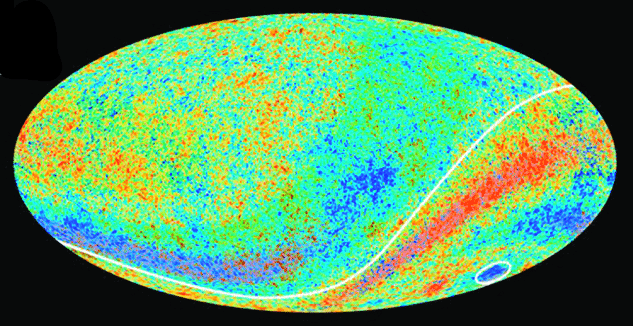The Observable Universe

The birth of the universe took place approximately 13.8 billion years ago thanks to the Big Bang mechanism or commonly known as the big bang.
It all began in a universe of minimum entropy (maximum order) and an accelerated expansion began that gave rise to the necessary conditions for the generation of planets, systems and galaxies.
Today the universe continues to expand every moment at unimaginable speeds.
From our small planet we try to look at the universe and study all kinds of cosmic objects. This is possible because its light reaches us and using large telescopes we can focus that light and see what is millions and millions of kilometers away from us.
However, the light that reaches us only belongs to a small region of the cosmos that is known as observable universe or Hubble volume.
This makes me wonder:
What parts of the universe are visible to us and which are not?
Today we will talk about
How big is the visible universe?
When we see an object it is because there are some photons that bounce off that object and reach the photoreceptor cells in our eye.
Then an electrical signal is produced that travels to the region of our brain specialized in vision. Once there, the image is created allowing us to see the world around us.
Therefore, to see we need photons, that is, light.
Applying this to our universe, we can observe with our telescopic devices, those photons that have traveled through the immense universe and that have been able to reach us.
The oldest photons that we can observe, and, therefore, the oldest photo we have of the universe, are those that came out 13.8 billion years ago, when the big bang took place. The border of the visible cosmos is called Hubble frontier and is composed of the microwave background radiation .

It should be noted that this is not entirely true.
We have to discount about 370,000 years during which the universe was opaque (it did not emit light). This is because during that short period of time (astronomically speaking), the universe was made up of a soup of electrons, protons and helium nuclei.
This soup of particles absorbed the light rays that were generated, becoming trapped without being able to travel through the cosmos.
Once this is clarified, we can also approximate that the light that reaches us today from the most primitive cosmos is around 13.8 billion years old, since the period in which the universe was opaque is much shorter than the total time of the universe.
PERFECT! We already have the answer!
So the visible universe has a radius of 13.8 billion light years.
I'm sorry to tell you that it's not really like that...
The APPARENT size of the radius of the observable universe is 13.8 billion light years, but the actual size of the radius is about 46.5 billion light years.
How can it be?
We have forgotten a very important part: the expansion of the universe.
Actually, yes. The universe itself.
Nothing can travel faster than light within the universe itself. But this does not prevent the universe from expanding faster than the speed of light.
The current observable universe has been calculated to have a radius of 46.5 billion light years. This length is known as comoving distance.
However, it will not be until these millions of years have passed that we can observe it since light has to travel this entire distance before reaching our devices.
Therefore, right now we are only able to observe the oldest universe, the light of which reaches us now.

What is the unobservable universe?
We have talked a lot about the visible part of the cosmos. However, we have not yet mentioned the unobservable part of this.
As we have mentioned previously, the universe expands at speeds greater than that of light. This has the consequence that there are regions of our cosmos that we will never be able to observe since their light will never reach our planet.
Therefore, we are totally disconnected from those parts of the universe, completely eliminating the possibility of contacting possible civilizations further away than our Hubble volume (or visible cosmos).
From here comes the hypothetical existence of the first type of multiverse: the type I multiverse.
In the parallel universes article we tell you!
Summary of observable cosmos
- The apparent visible universe is about 13.8 billion light years.
- The expansion of the universe has caused the cosmos that we can observe to currently have a radius of about 46.5 billion light years.
- The light we capture today is the one that started 13.8 billion years ago. This indicates that what we see is the past, the universe in its most primitive stages.
- We will never be able to see the non-visible part of the cosmos. This is because the universe is expanding at a speed above the speed of light. Therefore, that light will never reach us.

